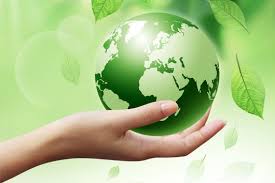-
The inputs and outputs of today’s cities reflect
important 19th-century decisions about infrastructure as well as
20th-century developments.
-
As shown in Figure 7.2 in the textbook, three
major types of household waste leave the home as two waste streams.
-
In some communities, storm runoff and/or
industrial wastes join the flow of municipal wastewater in the sanitary
sewer system.
-
The three main objectives of sewage treatment
serve the larger goal of producing a waste stream that can safely be
released into a body of water.
-
The processes used in municipal wastewater
treatment (sewage treatment) are designed to achieve its three main
objectives.
-
Nothing ever goes away; sewage treatment produces
treated effluent and also a new byproduct, sludge, which itself must be
treated and then put somewhere.
-
In less densely populated areas, water is used to
carry toilet waste to a septic system.
-
A composting toilet offers an alternative to the
use of water to carry sewage, thus recognizing the value of both clean
water and human waste.
-
The Clean Water Act sets standards for sewage
treatment, standards for sewage effluent, and limits on metals and
pathogens in sludge.
-
Safe community drinking water is of critical
importance in public health; conversely, unsafe water delivers a health
hazard to large groups of people.
-
In the United States today, some people use
private well water; others either treat or supplement their publicly
supplied tap water.
-
Federal drinking water standards are in place for
some biological hazards, turbidity, and a large number of chemical
contaminants.
-
Nothing ever goes away; much of our “stuff ”
eventually becomes trash—a waste stream that is mundane but still
challenging to manage.
-
Source reduction is a new twist on an old idea.
-
Recycling diverts recyclable materials from the
municipal solid waste stream.
-
In the United States, municipal solid waste that
is not recycled is either incinerated or placed in a landfill.
-
Municipalities may also produce other wastes.
-
Federal regulations govern the disposal of
municipal solid waste.
-
The world is rapidly becoming more urban.
-
Despite having adequate systems in support of the
“urban metabolism,” the built environment of more developed countries
also creates some health hazards, both indoors and out.
-
People living in industrialized countries engage
in a wide range of activities and use many products that are useful or
convenient or pleasant, but may also carry some health risk.
-
Among the various hazards discussed in Section
7.7, the potential health risks of certain consumer products and
services—including various personal care and household products, cell
phones, and tanning salons—were not well documented before they came on
the market.
-
The IPAT equation provides a way to conceptualize
the impact of development on ecosystems.
-
At a global scale, we face daunting challenges.
